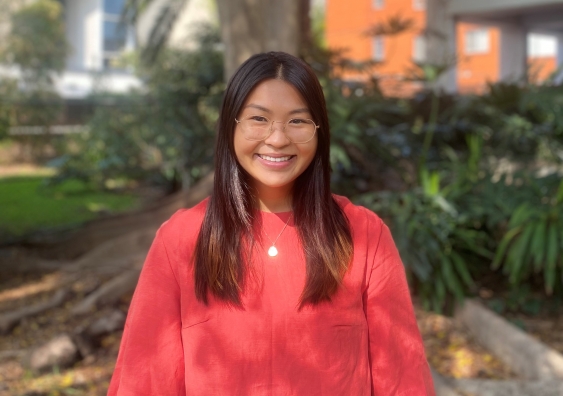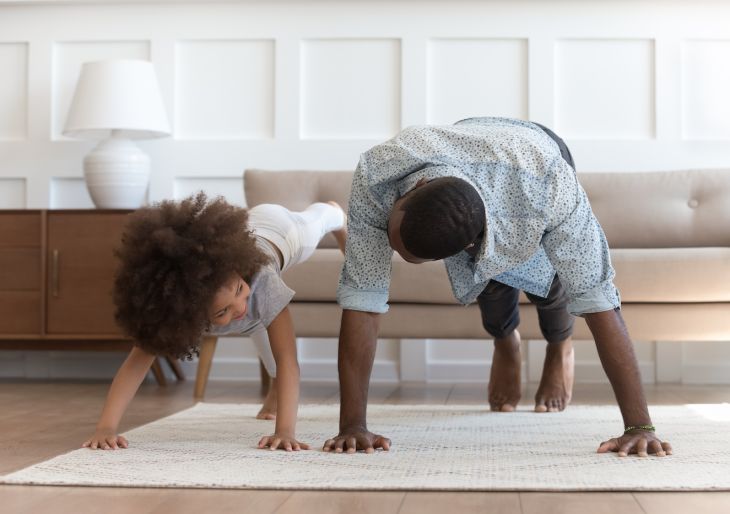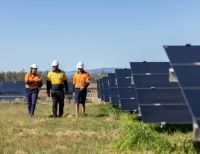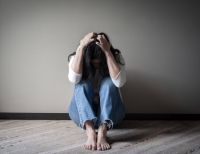Around 750 children are diagnosed with cancer in Australia each year. Thankfully, advancements in treatments have led to rising survival rates. But for survivors of childhood cancer, recovery can continue long after treatment finishes.
Often, survivors can experience health complications because of their cancer and cancer treatments, some of which may not show up until years down the track. Poor health behaviours today can exacerbate the risk of late effects, including cardiovascular disease, metabolic syndrome and obesity, meaning healthy lifestyle behaviours like exercise are vital.
“We know physical activity can positively influence survivors’ health-related quality of life. But childhood cancer survivors experience many barriers when it comes to physical activity,” says Dr Lauren Ha, exercise physiologist and Post-Doctoral Research Fellow in paediatrics, School of Clinical Medicine, UNSW Medicine & Health. “It’s a significant issue, as this population is at high risk of developing health problems, some of which they won’t experience until they’re in their 30s or 40s.”
Dr Ha investigates how novel technologies can support childhood cancer survivors to become more active. Supported by The Kids’ Cancer Project, Dr Ha has developed a digital health intervention for survivors called iBounce. The distance-delivered education program aims to improve survivors’ health knowledge and help them strive towards recommended physical activity guidelines. The results from the pilot study, published in JMIR Cancer, show the program’s promise to engage childhood cancer survivors and their families in healthy lifestyle behaviours.
“iBounce is an accessible tool made for childhood cancer survivors where they can learn about the importance of maintaining good physical health and can participate in physical activity on their schedule,” Dr Ha says. “It has the potential to educate survivors and their families in positive health behaviours at home, no matter where they reside.”
Read more: Fitness consultations in oncology care motivate child cancer survivors to be more active
Physical activity barriers for cancer survivors
Healthy behaviours, particularly physical activity, are crucial for preventing or minimising the impact of late effects of cancer. But an estimated 85 per cent of childhood cancer survivors do not meet the minimum physical activity guidelines of 60 minutes per day for children.
“Many survivors don’t exercise enough, have poor perceptions of their activity levels and have below-average fitness levels,” Dr Ha says. “But engaging in physical activity is safe and highly beneficial for childhood cancer survivors, regardless of their age, treatments and diagnosis.”
Dr Ha says getting enough physical activity is challenging for most of us at the best of times. But it can be extra demanding for childhood cancer survivors who have been through a treatment like surgery, chemotherapy or radiotherapy.
“Families are doing their best to care for their child. So, understandably, fitness isn’t always the first thing on the agenda,” Dr Ha says.
“Because survivors may have missed out on several months or years of school, they’re not completing the incidental exercise with their friends at lunchtimes. Once they’ve finished treatment, they’re often de-conditioned, or they might not have the motivation to participate in physical activity.”

Dr Lauren Ha designed the digital health program, iBounce. Photo: UNSW.
Dr Ha says it’s particularly challenging for the 30 per cent of survivors and families living in rural or regional areas in Australia, who often have less access to supportive care and experience greater cancer-related financial hardship in survivorship compared to metropolitan families.
Currently, just three paediatric hospitals in NSW service the entire state catchment for childhood cancer care. Dr Ha says there’s a growing need for distance-delivered technologies to address physical inactivity and low fitness levels and improve access to services for survivors.
“Getting to a healthcare professional or a hospital or clinic can be extremely difficult and expensive, so digital health is emerging to overcome some of the distance, time and cost barriers many families face,” Dr Ha says.
Promoting health and fitness education digitally
Dr Ha modified a version of iEngage, an evidence-based health education program for school-aged children, to create the home-based iBounce. Through 10 self-paced modules, topics such as muscular strength, aerobic fitness and flexibility are explored through bite-sized demonstration videos and exercises designed to get survivors informed and active.
“For example, the strength module educates about the importance of maintaining and increasing muscular strength, then guides different exercises survivors can do to put that knowledge into action,” Dr Ha says. “All the demonstration videos are less than two minutes and feature a child of a similar age doing the exercises to help encourage participants.”
Thirty participants from Sydney Children’s Hospital undertook the iBounce program in the pilot study, conducted at the height of the COVID-19 pandemic when schools, parks and social sports were closed and social distancing measures enforced.
Over 12 weeks, the survivors and their families used the program and tracked their physical activity using an activity tracker device. At the end, participants showed significant improvements in their aerobic fitness.
“We found that their fitness levels improved after completing the 12-week program, showing how physical activity can be done within the home setting with the right support,” Dr Ha says. “But the improvements in fitness did wane over time, meaning additional booster sessions are likely needed to maintain benefits long-term.”
‘Digital health is emerging to overcome some of the distance, time and cost barriers many families face.’
Dr Ha says while the, opt-in rate was slightly lower than expected, the results are still promising on the potential of distance-delivered programs to fill the physical health education gap among childhood cancer survivors.
“The digital delivery was found to be feasible, and survivors rated it as highly enjoyable and easy to use,” Dr Ha says. “Survivors particularly enjoyed completing the physical activities with their family. This highlights that parent support and family involvement are crucial for these young survivors to engage in health behaviours.”
At scale, the program could potentially reduce the burden on the healthcare system, Dr Ha says.
“If survivors improve their fitness levels, that can go a long way to help them with their recovery, reduce their risk of other chronic illnesses and relieve pressure on the health system,” Dr Ha says.
The next stage of the research will continue to refine the iBounce program with health professionals, childhood cancer survivors and their families, including non-English-speaking participants and culturally and linguistically diverse populations. Dr Ha will also lead a national iBounce trial and develop an implementation strategy to support the use of iBounce in clinical practice.







